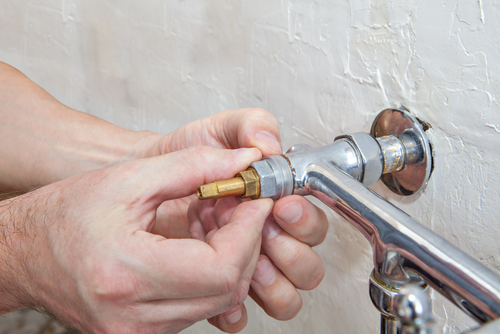The writer is making a number of good pointers about How to Fix a Dripping or Leaky Faucet overall in this great article below.

Trickling taps could feel like a minor trouble, however their impact surpasses simply the nuisance of the noise. From drainage to sustaining unnecessary monetary costs and wellness threats, neglecting a dripping faucet can cause various effects. In this write-up, we'll delve into why it's important to address this typical house problem promptly and efficiently.
Wastage of Water
Environmental Impact
Trickling taps contribute dramatically to water wastage. According to the Environmental Protection Agency (EPA), a single tap leaking at one drip per second can waste greater than 3,000 gallons of water each year. This not only strains water sources however also affects ecosystems and wildlife depending on them.
Step-by-Step Overview to Repairing a Dripping Tap
Tools Called for
Prior to attempting to deal with a dripping tap, gather the necessary tools, including an adjustable wrench, screwdrivers, substitute parts (such as washers or cartridges), and plumber's tape.
Typical Tap Issues and Their Solutions
Determine the sort of faucet and the certain issue creating the drip. Common issues consist of damaged washing machines, rusty valve seats, or malfunctioning O-rings. Refer to producer guidelines or online tutorials for detailed support on repair work.
Financial Expenses
Raised Water Expenses
Past the ecological influence, leaking faucets can blow up water expenses considerably. The collected waste gradually converts right into higher utility costs, which can have been stayed clear of with timely repair services.
Prospective Residential Or Commercial Property Damage
Moreover, long term dripping can lead to harm to components and surface areas bordering the faucet. Water buildup can cause staining, deterioration, and also structural concerns if left ignored, resulting in extra repair prices.
Health and wellness Problems
Mold And Mildew and Mildew Growth
The consistent existence of wetness from a dripping faucet creates an excellent environment for mold and mildew and mildew growth. These fungis not only endanger interior air quality but additionally posture health dangers, particularly for individuals with respiratory system problems or allergic reactions.
Waterborne Illness
Stationary water in dripping faucets can become a breeding place for germs and other virus, enhancing the danger of waterborne diseases. Pollutants such as Legionella germs flourish in stationary water, potentially leading to serious diseases when consumed or breathed in.
DIY vs. Expert Repair work
Pros and Cons of Do It Yourself Fixing
While some might try to deal with a leaking faucet themselves, do it yourself fixings come with their very own collection of obstacles. Without appropriate expertise and tools, DIY efforts can aggravate the issue or bring about insufficient repair work, lengthening the issue.
Benefits of Working With an Expert Plumber
Employing an expert plumber ensures that the underlying root cause of the dripping faucet is addressed properly. Plumbing technicians have the competence and devices to identify and repair faucet concerns efficiently, saving time and decreasing the risk of more damages.
Ecological Responsibility
Private Contribution to Preservation
Taking responsibility for taking care of leaking faucets lines up with more comprehensive efforts towards water preservation and ecological sustainability. Every individual's actions collectively make a substantial impact on preserving priceless sources.
Sustainable Living Practices
By prioritizing punctual repair services and taking on water-saving practices, people contribute to lasting living practices that profit both existing and future generations.
Safety nets
Routine Maintenance Tips
To prevent dripping taps, do routine maintenance such as cleaning up aerators, inspecting for leakages, and changing damaged components promptly. Additionally, take into consideration mounting water-saving devices or updating to more effective components.
Value of Prompt Repairs
Resolving trickling faucets as soon as they're observed stops further water wastefulness and possible damage, ultimately saving both water and money over time.
Impact on Residential Or Commercial Property Value
Assumption of Well-Maintained Home
Maintaining a property in good condition, consisting of attending to upkeep problems like dripping taps, enhances its perceived worth and value amongst prospective customers or lessees.
Impact on Resale Value
Features with properly maintained plumbing components, including taps, command higher resale values in the realty market. Addressing dripping taps can add to a positive impression during residential property assessments and settlements.
Verdict
Dealing with a leaking tap goes beyond plain ease; it's an essential step toward preserving water, minimizing monetary costs, and securing health and wellness and home. Whether through DIY repair services or professional assistance, taking action to repair leaking faucets is a little yet impactful means to promote liable stewardship of resources and add to a much healthier, extra sustainable future.
How to Fix a Leaky Faucet: Step-by-Step Repair Guide
A leaky faucet may seem like a simple annoyance, but if it's not fixed promptly, that leak could cost hundreds to potentially thousands. From water damage to mold, mildew, and high water bills, even a tiny leak can be catastrophic if left unattended. Damage like this can even affect the overall value of your home, so it's important to take the right approach for leaky faucet repair. You may need the help of a plumber in some cases, but we've got a few tips you can try on how to fix a leaky faucet before calling the pros.
Four Faucet Types
When you're learning how to fix a leaky faucet, the first step is knowing what kind of faucet you're working with! There are four common types.
Cartridge Faucets
Cartridge faucets come in one- or two-handled varieties. In one-handled cartridge faucets, hot and cold water combines in a single cartridge. In the two-handled versions, hot and cold water are controlled separately and mixed in the faucet.
Ball Faucets
Ball faucets have a single lever you push up and down to adjust the pressure and rotate to change the temperature. A slotted metal ball controls the amount of water allowed into the spout.
Compression Washer Faucets
They're the oldest type of faucet, but they're still used in many homes — especially older ones. Compression faucets have two separate handles that, when turned, raise or lower the washer that seals a water valve. This valve stops water from flowing through the faucet when it is turned off.
Disc Faucets
Disc faucets rarely need to be repaired due to their maintenance-free design. The water flow is controlled by two discs — the upper one raises and lowers against a fixed lower disc, creating a watertight seal. If your disc faucet starts leaking, you may need to replace the seals or clean residue buildup from the inlets.
Fixing a Leaky Faucet
Step 1: Turn Off the Water
Whether you're learning how to fix a leaky bathtub faucet or how to fix a leaky kitchen faucet, always turn off the water supply to your working area when you're fixing a leak. The last thing you want is a flood added to your list of things to fix.
Look for the shutoff valves below your sink or around the tub and turn them clockwise to stop the water flow. If your faucet doesn't have shutoff valves, you may need to turn off the water for the whole house. Check to make sure it's off by turning the faucet on. If nothing comes out, you're ready to start the repair.
Step 2: Take Apart the Faucet
How you disassemble your faucet depends on the type of fixture you have. You can use a flathead screwdriver to remove the caps on top of the handle or handles for cartridge and compression faucets. Inside, you should see handle screws. Unscrew these with a screwdriver to remove the handle.
Disc- and ball-style faucets will typically have an inlet screw near the handle, and removing that will reveal the interior of the faucet.
Detach the Valve Stem
For cartridge- and compression-style faucets, you'll see the inner valve stem or cartridge once you remove the faucet handles. If you have a compression faucet, unscrew the brass valve stem. If you have a cartridge faucet, pull out the cartridge. If your cartridge has been in place for a while, it may require some tools or extra force to remove it due to mineral deposits.
Examine and Replace Parts
Once you've removed the parts, check them out to confirm what needs to be replaced. You may see corroded rubber washers, O-rings, stems, or cartridges. On a ball-style faucet, check the seats and springs for damage.
If you need to repair a leaky disc faucet, check the inlet and seals on the lower disc.
Once you determine what parts must be replaced, visit your local hardware store. Bring the damaged parts with you to ensure you can purchase the correct components to replace them.
Clean Valves and Faucet Cavity
If you've removed a stem or cartridge, you may notice mineral buildup in the faucet's threads. Use white vinegar to clean the valve seat by soaking it for a few minutes, then scrub it away with a soft toothbrush and rinse with warm water. You can also clean the interior of the faucet in the same way.
Reassemble the Faucet
Once your faucet is cleaned and the required parts have been replaced, it's time to reassemble it. Put the pieces back together and slowly turn the water supply back on. Doing this slowly is crucial because too much initial water pressure can damage the new hardware you've just installed.
https://homewarranty.firstam.com/blog/how-to-fix-leaky-faucet

As a passionate person who reads about Why Is It Important To Fix Your Leaking Tap/Faucet?, I assumed sharing that information was worth the trouble. If you appreciated our page plz do not forget to share it. I am grateful for your time. Revisit us soon.